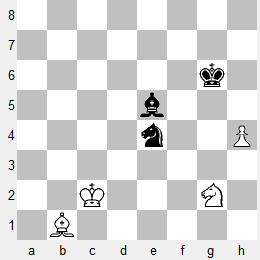Endgame Studies with Timman
GM Jan Timman is best known as a player. Last year, in 1967 World Juniors (October 2017), I gave a brief overview of his career as a World Championship candidate, stopping just before his ill-fated participation in the 1993 Karpov - Timman FIDE Title Match.
After being a player, GM Timman is also well known as an author. His Wikipedia page, Jan Timman, currently lists nine book titles and I am certain that the list is not complete. The last book listed is 'The Art of the Endgame', subtitled 'My Journeys in the Magical World of Endgame Studies' (New in Chess, 2011). The book brings us to a third aspect of his dedication to chess : as a composer of endgame studies. Chapter 1 of the 2011 book, titled 'Miniature Studies', starts,
A miniature study is a study with no more than seven pieces in the starting position. With minimal material, the composer must weave the maximum amount of finesses into the position. A classical example is the following study by the brilliant Russian composer Mark Liburkin.
Any study with seven pieces or less is solved by current tablebase technology, which we saw a few months ago in Seven-piece Tablebase on Lichess (August 2018). The Liburkin study is the first position in the first chapter of Timman's book.

Liburkin, '64' 1933
White to play and win
I'll continue to explore 'The Art of the Endgame' and will report any findings worth further research. I've already discovered that seven-piece tablebase positions are paricularly fruitful for further investigation.




No comments:
Post a Comment